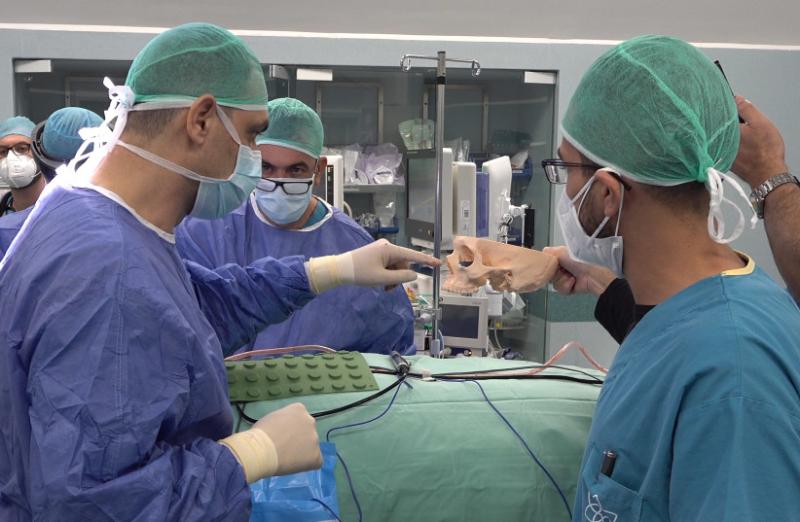A 31-year-old resident of the Galilee recently underwent a complex surgery after an injury that fractured his left eye socket resulting in double vision and impairing the aesthetics and symmetry of his eyes.
Prof. Samer Srouji of Galilee Medical Center’s Center for Oral and Maxillofacial Surgery led the operation alongside doctors from Sheba Medical Center (Tel Hashomer).
This surgery is the first of its kind in Israel as it combines technologies such as 3D printing and Augmented Reality (AR) to treat the eye socket fracture’s patient. The medical team used the patient’s computerized tomography (CT) scan to design a custom plate that replicated the shape of the floor of the eye socket. The 3D model was thereafter 3D printed in Titanium. Doctors leveraged AR to accurately determine where they will locate the 3D printed part within the patient’s skull.
In the theatre room, one of the surgeons wore Microsoft “HoloLens” glasses that were connected to the computer software where the patient’s skull has been designed. “HoloLens” glasses enable the wearer to see intricate details on 3D images accurately and move holograms as if they were in the real world. The model was virtually placed over the patient’s head, which enabled the doctor to reproduce the same operation using the glasses.
“Utilizing a 3D printer and AR resulted in both a particularly accurate execution of the operation, and a significant reduction in time,” Professor Samer Srouji told The Jersualem Post. “This technology will contribute to improved clinical outcomes and reduce repeated imaging and surgeries.”
This new approach to surgery is qualified as accurate and rapid. Not only does it allow for improved patient outcomes, it also decreases the need for follow–up surgeries.
The combination of AR & 3D Printing
The combination of AR with 3D printing is very nascent but so far, it has always led to successful applications that were worth exploring.
The truth is, 3D printing is not the only technology whose adoption has been expedited with the Coronavirus pandemic. AR is also one of them and the irony is, it was not always considered as a tangible solution to some of the industry’s challenges.
The pandemic has proven the contrary. Remember when PepsiCo reimagined the 2-liter bottle’s design ?
Today, according to experts, vocational training, professional development and further education of young doctors can be designed in a more efficient manner by integrating AR, VR and 3D printing. Specific cases are able to be discussed using the 3D print data and can be precisely comprehended in virtual reality. The printed 3D models allow doctors to gain valuable first experience. They can, for example, learn to examine tumors at varying stages by palpation (haptic feedback) and to subsequently judge the location in virtual reality. Individual surgery steps can also be trained in virtual reality.
Remember, you can post free of charge job opportunities in the AM Industry on 3D ADEPT Media or look for a job via our job board. Make sure to follow us on our social networks and subscribe to our weekly newsletter : Facebook, Twitter, LinkedIn & Instagram ! If you want to be featured in the next issue of our digital magazine or if you hear a story that needs to be heard, make sure to send it to contact@3dadept.com






